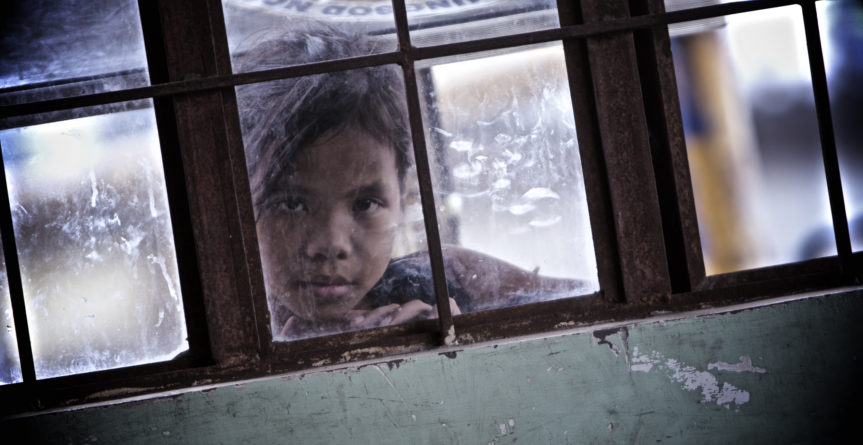“Special” education shouldn’t be that special. Our current system artificially divides students, provides excuses for failure, and tends to hurt rather than help the intended beneficiaries, all the while walling out a whole range of students who should benefit from additional resources but don’t technically qualify.
Fixing “special” education means making it unspecial, eliminating the false divide between “special” education and general education and focusing on good training and classroom practice that meets the needs of all children.
“Special” education is not that special. Most identified “special” education students spend the majority of their day integrated into a general education classroom, many students who could qualify for services are not referred, and many more students who need services are not technically qualified. These children are in general education classrooms.
At the same time, starting in education schools, we divide our teachers into those qualified to help students with special needs and those who aren’t. There are distinct training and credentialing tracks for “special” education teachers and general education teachers. And in many districts (thanks OUSD for moving away from this model) “special” education teachers aren’t even based at a single school, they have their own department in the district that rotates them among schools. Educationally, this makes no sense.
Who is “special” varies across time and space
The prevalence and identification of “special” needs varies widely across time, and across schools, districts and states, (Rhode Island’s rate of disability is twice Texas’). In 1976-77 8.35% of students were identified as having a disability, in 2004-05 it was 13.8% (a 65% increase) and in the last full year of stats 2011-12 it was 12.9%. These aren’t real differences in kids but differences in the way we define them. There are “special” education students in every general education classroom—they just haven’t been identified.
At the same time, some disability categories have grown exponentially, like autism, whose incidence has tripled since 2000. There were always spectrum students in schools, we can probably think back to students we knew, who maybe were on the spectrum, but they weren’t given “special” treatment and their teachers weren’t “special” education teachers. And even now the whether a child gets an autism spectrum diagnosis varies widely by income and race.
I can show you schools that over-refer students for services, pushing them through the “special” education identification process and getting them that piece of paper—the individualized education plan (IEP) that is their long term (and sometimes one-way pass) to the world of “special” education services and additional resources. I can also show you schools that under refer them—finding ways to understand and support their needs in a general education classroom.
And for anyone who has worked in schools, you get this. There are many students who don’t technically have an identified disability, though if they pushed, or could afford a lawyer, they would likely qualify. It’s obvious something is going on with them, but they haven’t gone through the referral process, and you just deal with them in the classroom, with supports.
Who should be special?
There are also critical issues that affect learning, but don’t qualify as disabilities, though they are essential to understanding and serving children—like trauma. I covered the physiological aspects of trauma previously, but the short story is that trauma changes your brain and heightens your fight or flight response, and that this has huge implications for schools and student learning. But trauma does not qualify as a disability that warrants an IEP and additional resources.
If you were hit in the head physically and had a brain injury that affected your learning you would likely qualify, but the soft chemical induced injury of trauma, whose effects are no less pronounced, doesn’t count. Again, this makes no sense.
“Special” or special?
“Special” education is not that special, it should just be considered good education. And we should teach all teachers to work to support the broad swaths of learners and give specializations for targeted populations, so like a math credential, you could earn an autism spectrum specialization, or trauma informed care, or speech. But everyone would be generally trained to work with the broad range of students, and understand that is the expectation. School staff routinely deal with all these “special needs” identified, unidentified, recognized, and unrecognized anyways.
When families speak of their children as special, it is used affectionately to refer to each child’s unique gifts, abilities and quirks. When you hear “special” in schools it means something completely different. There is a reason that students use “special” as an insult. We adults created an always shifting category that derides rather than supports, and segregates rather than includes.
As a parent commented,
“I can’t imagine how it must feel to part of the creation of this sad, sad, mess—where children are pariahs, their families are the enemy, “special” means “can’t-be-done,” and education has long been forgotten”
We need to overturn this system. The only way to fix special education is to make it unspecial, from root to branch, obliterating the divided training and credentialing of “special” and general educators, and putting qualified, responsively-trained educators in schools. We need to promise a good education for all learners, treating them with equal concern and respect, as if they were our own children, as if every one of them they were special.
Please follow me on twitter , facebook, or join the blog to the upper right on this page

